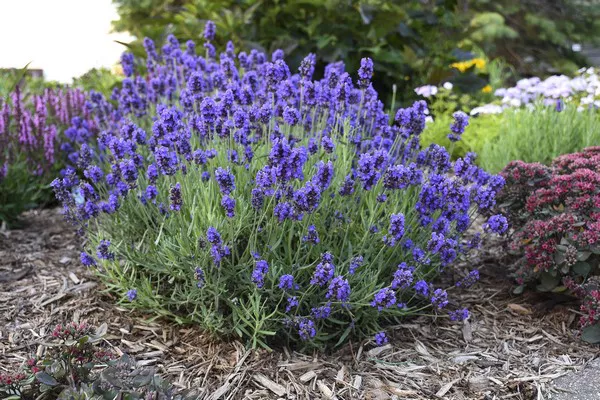When it comes to adding vibrant colors and beauty to your garden, flower bulbs are a popular choice among garden enthusiasts. These underground storage structures contain all the nutrients and energy needed to produce stunning blooms. However, one common question that plagues many gardeners is, “How long do flower bulbs take to grow?” In this comprehensive guide, we will delve into the intricate world of flower bulbs and explore various related topics to help you understand their growth process better.
The Basics of Flower Bulbs
Before we dive into the timeline of flower bulb growth, let’s first understand what flower bulbs are and how they function. Flower bulbs are specialized plant structures that store food and energy to support the growth and development of the plant. They come in various shapes and sizes, but the most common types include tulips, daffodils, lilies, and hyacinths.
Factors Affecting Flower Bulb Growth
The time it takes for flower bulbs to grow varies depending on several factors. Understanding these factors can help you manage your expectations and cultivate a successful garden. Here are some key elements that influence flower bulb growth:
1. Bulb Type
Different types of flower bulbs have varying growth periods. Some bulbs, like crocuses and snowdrops, bloom early in the spring, while others, like daffodils and tulips, may take longer and bloom later in the season.
2. Climate and Weather Conditions
The local climate and weather conditions play a significant role in flower bulb growth. Bulbs require specific temperature ranges and photoperiods to trigger growth and flowering. Warmer climates may see earlier growth, while colder regions may experience a longer dormancy period.
3. Soil Quality and Preparation
The quality of your soil and its preparation can affect the time it takes for flower bulbs to grow. Well-draining soil enriched with organic matter promotes healthy root development and quicker growth.
4. Planting Depth
The depth at which you plant your flower bulbs can impact their growth timeline. Deeper planting often results in a longer time for bulbs to reach the surface and produce flowers.
5. Bulb Health and Viability
The health and viability of the bulbs themselves are crucial. Fresh, disease-free bulbs are more likely to sprout and grow faster than old or compromised ones.
The Growth Timeline of Flower Bulbs
While the specific timeline can vary, a general understanding of the growth stages of flower bulbs can be helpful. Here’s an approximate timeline for the growth of common flower bulbs:
1. Planting
The first step in growing flower bulbs is to plant them in the ground. This typically occurs in the fall for spring-flowering bulbs and in the spring for summer-flowering bulbs. Bulbs should be planted at the recommended depth, which varies depending on the bulb type.
2. Root Development
After planting, flower bulbs focus on developing roots. This stage can take anywhere from a few weeks to a few months, depending on various factors like soil temperature and moisture levels.
3. Shoot Emergence
Once the roots are established, shoots will begin to emerge from the soil. The timing of shoot emergence varies based on the bulb type, climate, and local weather conditions.
4. Leaf Growth
Following shoot emergence, leaves will start to grow. These leaves are essential for photosynthesis, which provides energy for the bulb to develop and store nutrients.
5. Bud Formation
As the leaves continue to grow, flower buds will form. The time it takes for buds to appear can range from a few weeks to a couple of months, depending on the species.
6. Flowering
Finally, the flower bulbs will bloom, showcasing their vibrant colors and unique shapes. The duration of the flowering period depends on the specific bulb and environmental conditions.
7. Post-Bloom Care
After flowering, it’s important to care for the bulbs to ensure their long-term health. Deadhead spent flowers, allow the foliage to wither naturally, and consider fertilizing to replenish the bulb’s nutrients.
Popular Flower Bulbs and Their Growth Times
Let’s take a closer look at some popular flower bulbs and their typical growth times:
1. Tulips (Tulipa spp.)
Tulips are renowned for their vibrant spring blooms. Depending on the variety, tulips usually take 1 to 2 months from the emergence of shoots to full flowering.
2. Daffodils (Narcissus spp.)
Daffodils are known for their early spring blooms. They typically take 2 to 3 months from the emergence of shoots to flowering.
3. Crocuses (Crocus spp.)
Crocuses are among the earliest spring bloomers. They often flower within 2 to 4 weeks of shoot emergence.
4. Lilies (Lilium spp.)
Lilies are summer bloomers, taking approximately 2 to 3 months from the emergence of shoots to flowering.
5. Hyacinths (Hyacinthus spp.)
Hyacinths typically bloom in late winter to early spring, around 2 to 3 weeks after shoot emergence.
Tips for Accelerating Flower Bulb Growth
If you’re eager to see your flower bulbs bloom faster, here are some tips to expedite the process:
1. Choose Early-Blooming Varieties: Opt for bulb varieties that are known for their early blooming tendencies.
2. Pre-Chill Bulbs: If you live in a warm climate, consider pre-chilling your bulbs in the refrigerator for a few weeks before planting to simulate winter conditions.
3. Provide Adequate Water: Consistent and deep watering can encourage quicker growth.
4. Use Fertilizers: Apply a balanced fertilizer during the growing season to provide essential nutrients.
5. Protect from Pests and Diseases: Monitor your garden for pests and diseases that can hinder bulb growth.
Conclusion
The question of how long flower bulbs take to grow doesn’t have a one-size-fits-all answer. It depends on various factors, including bulb type, climate, and care. Understanding the growth stages of flower bulbs and the influence of these factors can help you plan and cultivate a garden bursting with colorful blooms. So, whether you’re planting tulips, daffodils, or any other type of flower bulb, patience and proper care will reward you with a stunning floral display in due time. Happy gardening!


